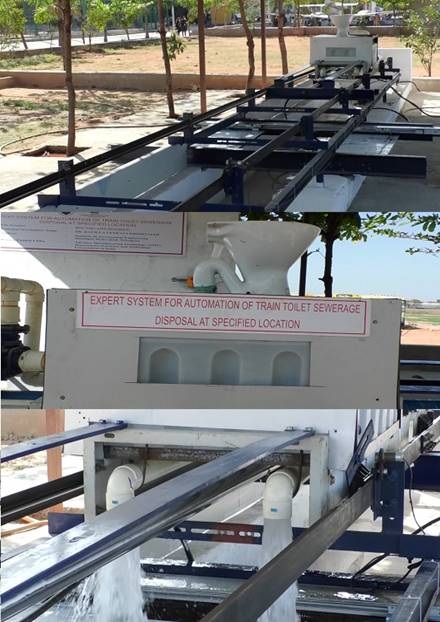A cheaper alternative to bio-toilets developed for Indian Railways
An Andhra Pradesh-based scientist has developed a seven times cheaper alternative to existing bio-toilets in the trains that cost Rs 100,000 per unit. The new technology has been stated to ease the maintenance of the toilets as well. More details here.


This technology has been developed for the Indian Railways. Photo: pib.gov.in
An easy to maintain, automated technology for collection and treatment of toilet waste has been developed for the Indian Railways. The innovation is claimed to be a seven times cheaper alternative to the existing bio-toilets, which cost Rs 100,000 per unit and the new technology costs Rs 15,000.
The technology was developed by RV Krishnaiah, an Andhra Pradesh-based scientist from Chebrolu Engineering College.
This technology has been developed for the Indian Railways, specifically with the aim of cost reduction and to obviate the necessity of time-consuming anaerobic bacteria’s action on human waste to produce biogas.

The bio-toilets use anaerobic bacteria for converting human waste to gas, but the bacteria can’t decompose plastic and cloth materials dumped into toilets by the passengers. This makes maintenance and removal of such non-biodegradable materials inside the tank difficult.
“This is also an automated system for collection of toilet waste from running trains and segregation of different materials and processing into usable things,” read the government statement dated July 17.
Supported by the Advanced Manufacturing Technologies programme of the Department of Science & Technology (DST), it is aligned with the ‘Make in India’ initiative and has been granted five patents and is stated to be in the testing phase.

How does the new technology work?
The automated system consists of three steps. The septic tank (which is placed under the track, i.e. train line) top cover gets opened when train approaches to the septic tank place by using Radio Frequency Identification (RFID) sensor and reader placed at engine and septic tank position respectively. Thereafter, sewage material in toilet tanks is dropped into the septic tank and at the end, the septic tank cover gets closed when the train departs away from the tank.
The collected sewerage material from train toilets is segregated such that human waste is stored in one tank, and other inorganic materials such as plastic and clothes are stored in another tank. The human waste is further processed separately to convert into usable material and the inorganic material is processed separately.

